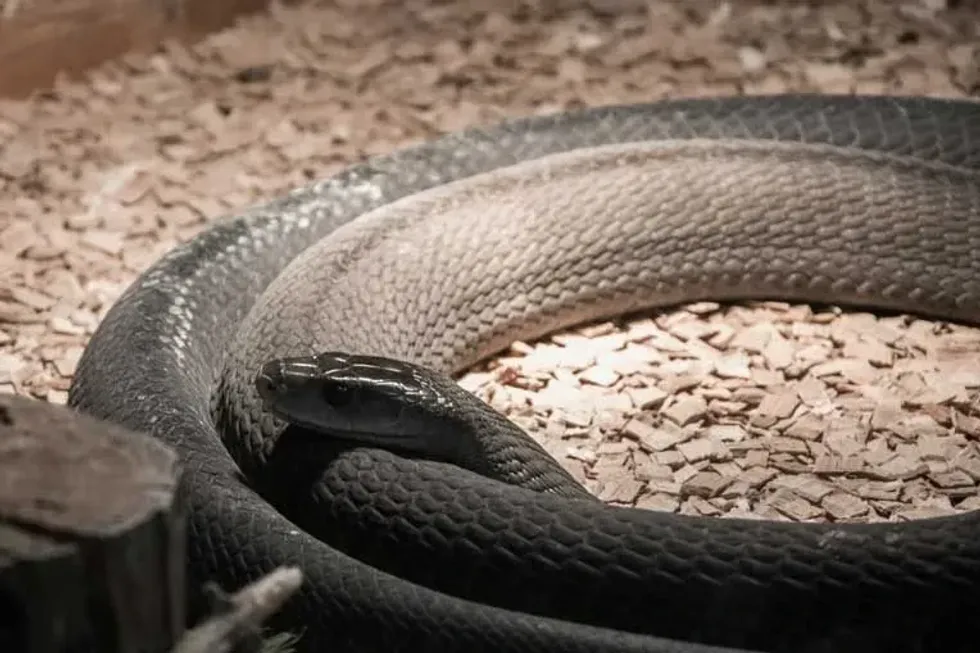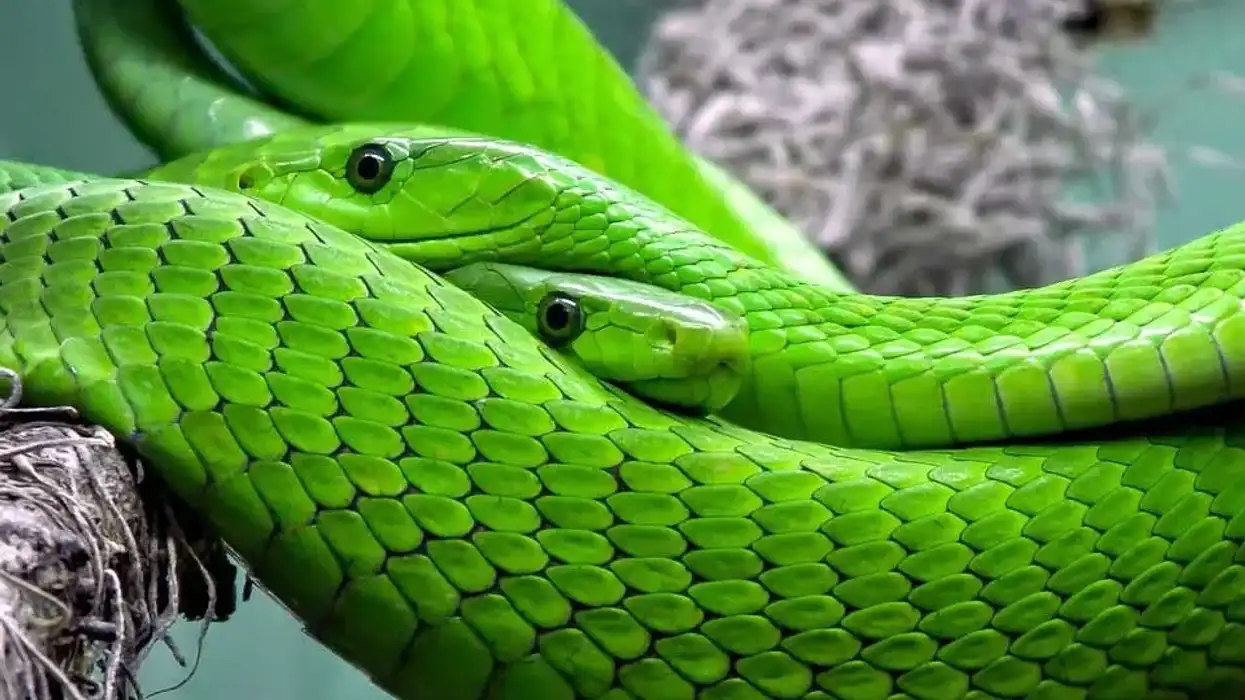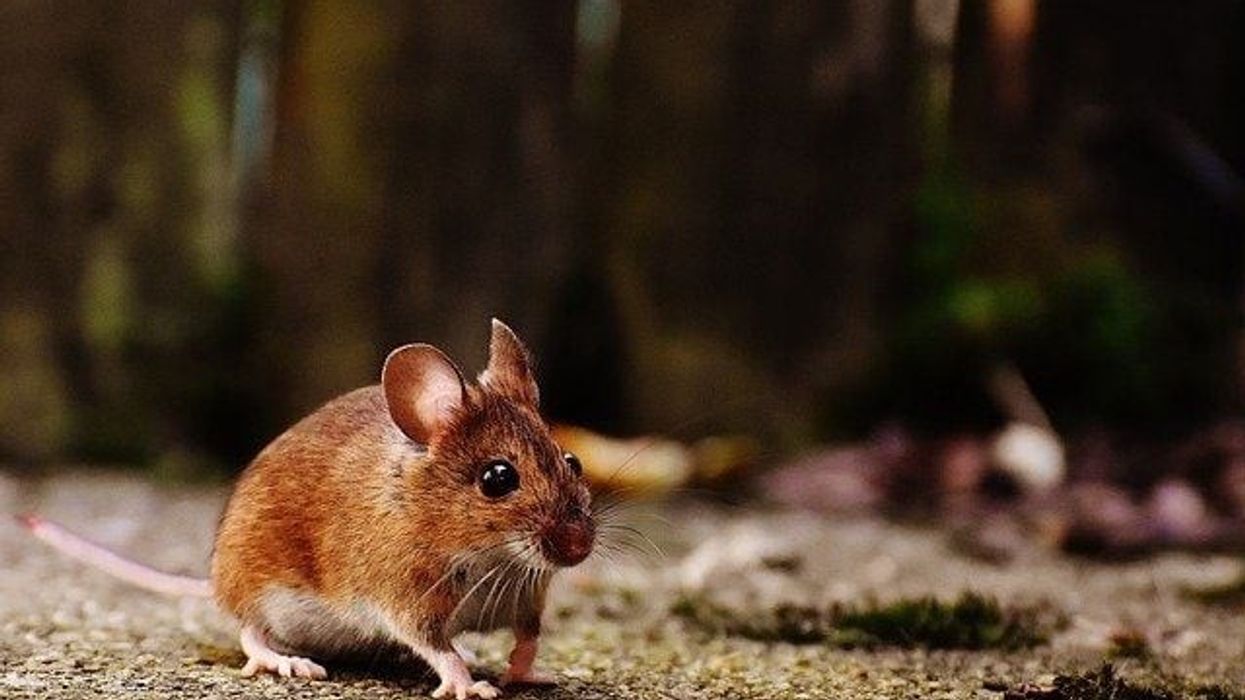Along with being among the most venomous snakes in Africa, the mambas are one of the fastest snakes in the world. Their venom, combined with their impressive agility, makes them one of the most feared animals in Africa. If a bite from a black mamba is left untreated, it means certain death for the victim.
Mambas are most irritable and aggressive around their breeding season and most cases of snakebites occur during this time. Even though they might appear to be terrifying, mambas will try to avoid humans and usually do not attack or bite unless provoked.
The African black mamba snake is also the second-largest venomous snake in the world. They are commonly found in the rocky hills of Eastern and Southern Africa and in the savannas.
You may also check out black mamba facts and mangrove snake facts from Kidadl!
Mamba Interesting Facts
What type of animal is a mamba?
A mamba, of the Dendroaspis genus, is a fast-moving, venomous snake.
What class of animal does a mamba belong to?
Mambas belong to the class Reptilia.
How many mambas are there in the world?
Mambas are fairly common and widespread in Sub-Saharan Africa.
Where does a mamba live?
There are four species of mambas found across the African continent. Three of these species namely: the eastern green mamba (Dendroaspis angusticeps), Jameson's mamba (Dendroaspis jamesoni), and the western green mamba (Dendroaspis viridis) are arboreal, meaning that they spend their lives in trees.
These arboreal mambas are green in color and inhabit rainforests. On the other hand, the much more well-known black mamba (Dendroaspis Polylepis) is terrestrial and can be found in semi-arid savannas. The black mamba can be distinguished by its brown or grey color.
What is a mamba's habitat?
All four species of the mamba are endemic to the Sub-Saharan African region. The scientific name for their genus is Dendroaspis, which translates to 'tree asp' or 'tree snake'.
The black mamba is the only member of the Dendroaspis family which spends the majority of its life on land and is found in the rocky hills of Eastern and Southern Africa and in the savannas.
Who do mambas live with?
Like most members of the suborder Serpentes, the mamba is also a solitary animal. Although they do congregate for reproduction.
How long does a mamba live?
On average, mamba snakes can survive up to 11 years in the wild. Mambas have been observed to live up to the age of 20 years in captivity.
How do they reproduce?
The only time a big mamba snake congregate is for reproduction. Mamba snakes are polyandrous which means that they breed with several mates. The mating season of this snake varies depending on the species.
The arboreal eastern green mamba mates during the rainy season, between April and June. On the other hand, the breeding season for the terrestrial black mambas waits for the drop in temperature that follows the rainy season. The black mamba's mating season doesn't arrive until September and it might span as long as February.
During the mating season, rival males will compete against one another for the right to mating opportunities. These combats between suitors can last up to several hours.
Once a male has established his dominance, he approaches the female. The female will indicate her consent by lifting her tail and keeping the rest of her body still. Following the mating, the female lays a clutch of eggs that can range from four to seventeen eggs.
What is their conservation status?
The International Union for Conservation of Nature (IUCN) lists the conservation status for black mambas and the western green mamba as of Least Concern. They are fairly widespread across their respective habitats.
Mamba Fun Facts
What do mambas look like?

The appearance of the mamba snake depends on the type of snake. The black mamba snake has a long, cylindrical, and slender body with a head in the shape of a coffin. It has medium-sized eyes and a pronounced brow ridge. They vary in color ranging from yellowish-brown to olive, gunmetal, khaki, and rarely black.
The western green mamba also has a long, slender body with a long, tapering tail. The color of their body can range from yellowish green to green with yellow anterior margins of their scale.
In many specimens, the tail and posterior are yellow. The eastern green mamba has a large, slender, and slightly compressed body with a long or medium-sized tapering tail. It has a bright green upper part and a pale yellow-green belly.
The Jameson’s mamba snake has a large, slender body with a long tapering tail and smooth scales. Their color is dull green on the back, pale green on the underbelly with scales edged with black. The neck, throat, and ventral side are typically yellowish or cream in color.
How cute are they?
The mamba is not particularly known for being cute. On the contrary, they look quite terrifying and intimidating at first glance.
How do they communicate?
Like most snakes, mamba snakes are solitary animals. They rely on their tongues to gauge their surroundings and during mating season the males will rapidly flick their tongue to court the female.
How big is a mamba?
As is the case for most snakes, the female snakes are significantly larger than their male counterparts. While most of the mamba snakes can grow to 6.7ft (2.01m) in length, The female black mamba can grow up to 9ft (2.7m) and some specimens have been observed to grow to lengths of 14ft (4.27m).
How fast can a mamba move?
A black mamba snake's speed ranges from 10mph to 12mph (16kmph - 19kmph).
How much does a mamba weigh?
The body mass of an adult mamba black snake can range from anywhere between 1.15lbs (520g) to 5.3lbs (2.4kg).
What are the male and female names of the species?
Although the females of the species are noticeably larger than the males, like most snake species, there is no distinct name for the male and female members.
What would you call a baby mamba?
The baby mamba snakes are called snakelets. The hatchlings of the eastern green mamba are 12in (30cm) to 18in (45cm) in length. While the snakelets of the much larger black mamba can range from anywhere between 16in (40cm) to 24in (60cm) in length.
What do they eat?
Mambas prey on small vertebrates such as birds, favoring nestlings or fledglings. They even hunt small mammals like hyraxes, rodents, bats, and bushbabies. Although they prefer eating warm-blooded animals, they will also eat cold-blooded animals like lizards and other snakes.
Are they aggressive?
Although the black mamba is infamous for being aggressive, in most cases, mambas are shy and will avoid human interaction. Even though they are not aggressive, upon repeated provocation, a mamba will strike back.
The venom of black mambas is highly potent and, when untreated, it will definitely kill a human. The black mamba is the most feared snake in Africa.
Would they make a good pet?
Since they are so venomous, mambas don't make good pets. Even when kept in captivity, they require expert handlers to take care of them.
Did you know...
Like the king cobra, black mambas also possess a neck flap but it is much narrower.
'Mamba' is derived from the Zulu word 'Imamba'.
What colors are mambas?
The arboreal mambas are green in color while the largely terrestrial black mamba is either gray or brown.
How does a mamba snake compete for survival?
Apart from various birds of prey, and a few mammals like the mongoose and honey badger, adult mambas have very few natural predators. Mambas are diurnal and hunt during the day. Male mambas face fierce competition from one another during the breeding season.
Here at Kidadl, we have carefully created lots of interesting family-friendly animal facts for everyone to discover! Learn more about some other reptiles from our cottonmouth snake facts and copperhead snake facts pages.
You can even occupy yourself at home by coloring in one of our Mamba coloring pages.









